The Gigabyte Aorus Master 16 proudly embraces its identity as a gaming laptop, both in form and function. Measuring an inch thick and weighing 5.5 pounds, it sports aggressive styling with curved plastic, stylized text, and a generous dose of RGB lighting that leaves no doubt about its target audience.
Design and Build Quality
Design-wise, the Aorus Master falters in subtlety. The thick plastic screen bezel feels outdated, and the overall aesthetic struggles to find a clear identity. It lacks the sleek maturity of Lenovo’s Legion Pro 7i and the cohesive bravado of Asus’ ROG Strix Scar, which goes all-in with animated LEDs and wraparound lighting. The Aorus, by contrast, tries to impress with gimmicks—branding across the trackpad, a glowing wordmark below the rear exhaust, and the cringe-inducing slogan “Team up. Fight on” stamped across the lid. The screen can wobble slightly when opened, though it does lift easily with one hand.
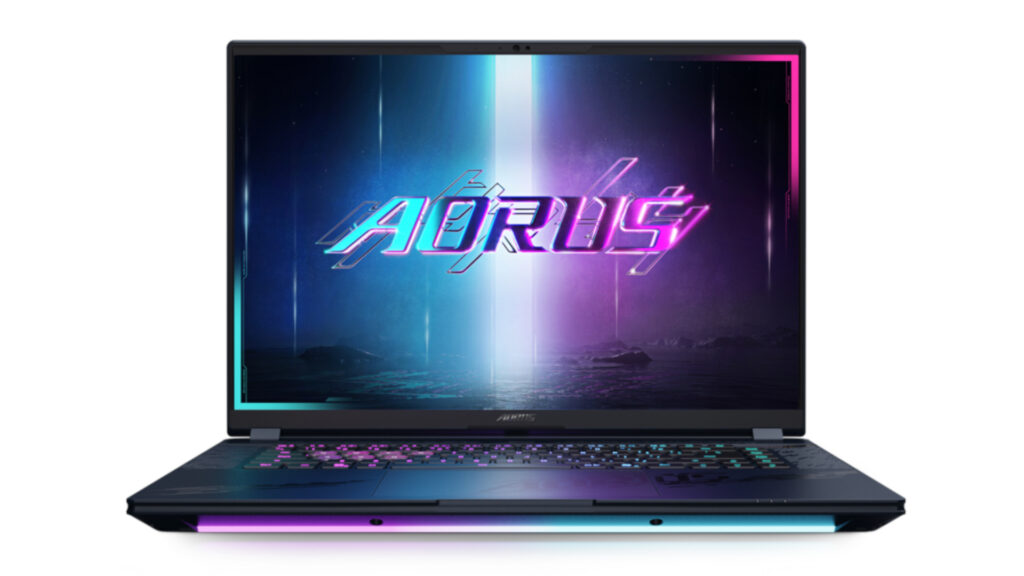
Display and Visual Performance
Beyond its bold exterior, the Aorus Master 16 delivers impressive specs. At its heart is Nvidia’s GeForce RTX 5080—the brand’s second-fastest mobile GPU this generation—paired with a stunning OLED display boasting high resolution and a silky-smooth refresh rate. It’s one of the first laptops we’ve tested featuring this chip, and at $3,100, it undercuts comparable models from Razer, Lenovo, and Asus by several hundred dollars. It even comes in over $1,000 less than systems equipped with the top-tier RTX 5090.
That said, the display remains one of the Aorus Master 16’s best features. Like the Razer Blade 16, it sports a 16-inch 2560 x 1600 OLED panel with a 240Hz refresh rate. Although its color reproduction is a bit less accurate than the Blade’s, it still delivers vibrant yet balanced visuals, avoiding the oversaturation that plagues some OLEDs. The 2.5K resolution ensures crisp detail across everything from competitive games to everyday browsing, and its brightness holds up well under various lighting conditions.
Gaming Performance
In terms of gaming performance, the Aorus Master 16 competes closely with the Asus ROG Strix Scar 16, which features the same CPU and GPU at a $200 premium. The Gigabyte laptop typically matches or slightly surpasses the Asus in 4K and 2.5K benchmark tests, including demanding titles like Black Myth: Wukong and Cyberpunk 2077. This positions the Aorus Master within reach of the flagship RTX 5090-powered Razer Blade 16, which costs significantly more. Our tests showed the 5090 outperformed the Aorus Master by only 3.5 fps on average without frame generation and up to 10 fps with frame generation—differences so small they highlight the value of the RTX 5080, especially when paired with the Blade 16’s power-limited 5090.
In Oblivion Remastered, the Aorus Master averaged 143 fps on a 4K display with high settings and frame generation enabled. Disabling frame generation dropped the average to 99 fps. In the open-world section on ultra settings, performance fluctuated between 50 fps without frame gen and 77 fps with it enabled. However, one consistent issue remained: the relentless fan noise that accompanied even the most demanding tasks.
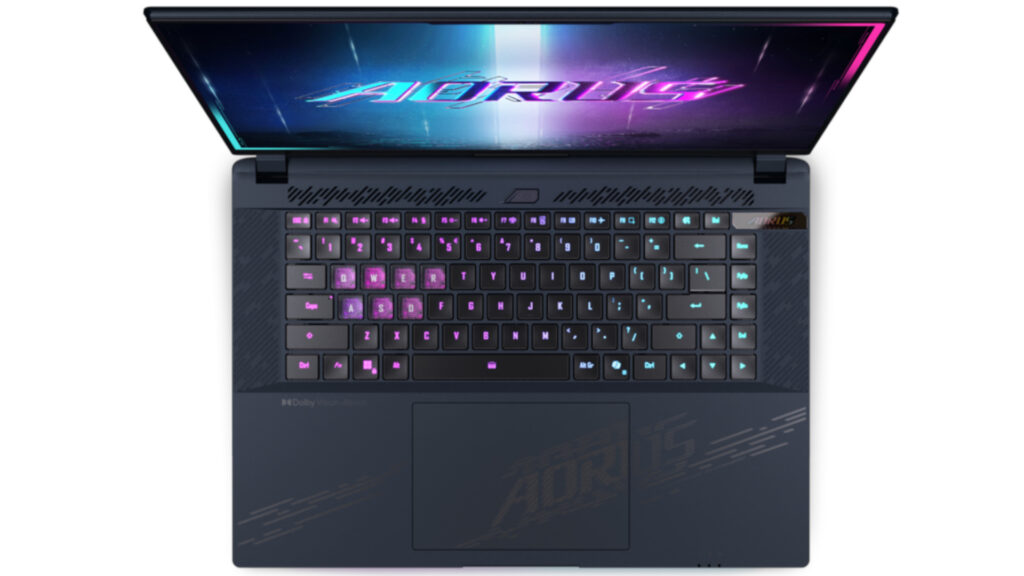
Software and Customization
However, that price advantage comes with compromises. While performance is competitive, the laptop’s overall build quality feels less refined than its pricier rivals. Gigabyte’s bundled software also falls short: it includes a nonessential AI chatbot while omitting fundamental features like custom fan controls—a notable oversight given the system’s noticeably loud cooling fans during intensive use.
GiMate’s additional features are minimal and often fall short compared to the built-in tools within Windows 11 and Nvidia’s GPU settings. Its operating modes function primarily as shortcuts to Windows power settings, offering little beyond what’s already available. In certain instances, GiMate merely redirects to Microsoft Copilot or Nvidia’s Control Panel and Broadcast App. The app’s behavior becomes even more perplexing when unplugging the charger—prompting users to switch to integrated graphics and close applications it claims are taxing the discrete GPU. This MUX switch functionality is already managed by Nvidia’s Advanced Optimus, which raises the question of why Gigabyte opts for this cumbersome approach.
The GiMate AI chatbot, touted as a feature to optimize your laptop experience, also misses the mark. When asked to explain the difference between Game Mode and Balanced, it simply enabled Game Mode without providing any further insight. Basic tasks like toggling Wi-Fi on or off can be requested, but the process takes considerably longer than performing them manually. While this may appeal to those less familiar with technology, it feels out of place on a gaming machine designed for efficiency and performance.
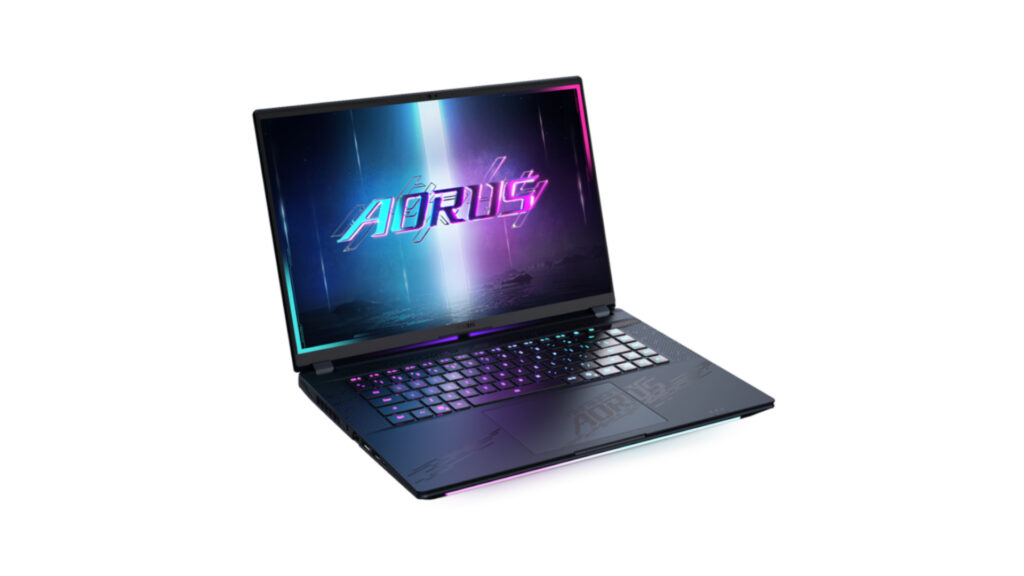
Keyboard, Touchpad, and Input Devices
Gigabyte gets the fundamentals right. The core hardware is backed by thoughtful touches: user-upgradeable RAM and storage, a solid port selection, and reliable input devices. The keyboard offers satisfying 1.7mm key travel and tactile feedback, while the touchpad, though a bit loud, remains responsive and easy to use even near its upper edge. It may not be the most refined laptop in its class, but it’s functionally sound where it counts.
The keyboard does feature three-zone RGB lighting rather than per-key customization, but the transparent WASD and adjacent keys add a fun touch. The lighting, though not as customizable as some other gaming laptops, provides a striking aesthetic that makes the keyboard stand out, especially in dim lighting conditions.
Fan Noise and Cooling Performance
The fan noise remains the most noticeable issue with this laptop. During graphically demanding games like Monster Hunter Wilds or Lushfoil Photography Sim, the fans become distractingly loud, forcing you to either turn up the game volume or grab a pair of headphones. In these instances, the fan noise can overshadow the experience, especially when gaming for extended periods.
Even in a shared home office, where background noise is common, the Aorus’ fans managed to catch the attention of others. During one session of The Elder Scrolls IV: Oblivion Remastered on a 4K external monitor, the fans were audibly noticeable even in another room, particularly during moments of shader compiling. At full speed, they create a sound akin to a small vacuum cleaner running in the background, a stark contrast to quieter systems like the Razer Blade 16 and the Asus ROG Strix Scar 16, both of which produce considerably less fan noise.
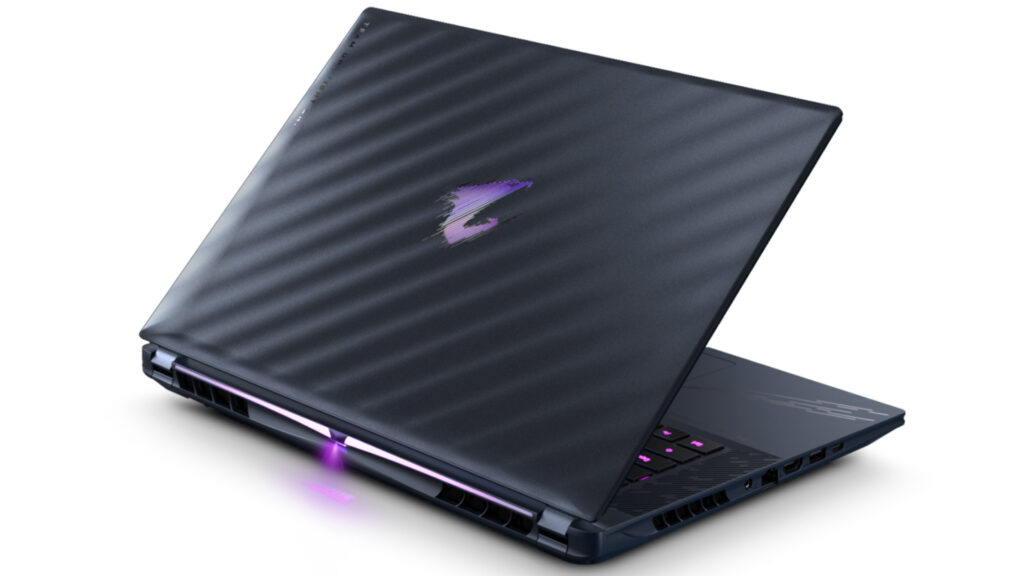
Software support is another area where the Aorus falls short. Unlike competitors like Razer Synapse or Asus Armoury Crate, Gigabyte’s GiMate software does not offer fine control over fan curves. Instead, it limits users to four basic presets. Switching between modes—such as from “game mode” to “balanced” or adjusting fan settings from “performance” to “normal”—can reduce the noise slightly without sacrificing too much in terms of performance. Still, in high-demand scenarios, the fans can become loud even in these quieter modes. For those who opt for the turbo mode, expect the fans to run at full speed the entire time, making it an option for only the most hardcore users.
Webcam, Audio, and Multimedia
The 1080p webcam, along with its built-in microphones and speakers, offers a basic experience. While video calls will be sufficiently clear in most lighting conditions, the audio output leaves something to be desired. The speakers provide decent fullness for music, but when it comes to dialogue, the sound tends to be flat and less dynamic. In games, particularly those with loud music or sound effects, such as action-packed titles, the dialogue can become harder to distinguish, compounded by the fan noise coming from the system itself.
Battery Life
Battery life remains a limitation, with the device struggling to last more than six hours even in power-saving mode. While it performed adequately during photo editing tasks, there were instances where Lightroom Classic slowed significantly on battery power, forcing a restart—far from ideal for users needing quick editing capabilities.
Value and Comparison with Competitors
While the Aorus Master 16 is one of the more affordable laptops equipped with the Nvidia 5080 GPU, there are several intriguing alternatives that offer more for just a bit extra. The Asus ROG Strix Scar 16, for instance, boasts a sleeker design and quieter fan operation. Similarly, the HP Omen Max and Lenovo Legion Pro 7i come with OLED displays, matching the Aorus Master 16 in this regard. Though I still favor the Gigabyte’s OLED panel over the Asus’ Mini LED, further testing of the Asus model is necessary before making a final comparison. Additionally, I’ll be evaluating the Lenovo and HP models; their OLED screens could bring them closer to the Gigabyte in performance.
Final Thoughts
The Aorus Master 16 certainly has much to recommend, but it’s not without its flaws. Its powerful internal hardware and stunning OLED display deliver an exceptional gaming experience, yet issues like the subpar GiMate software, uninspiring build quality, and occasionally intrusive fan noise undermine its appeal. It’s almost as if the experience of savoring a treat is ruined by an unexpected interruption.
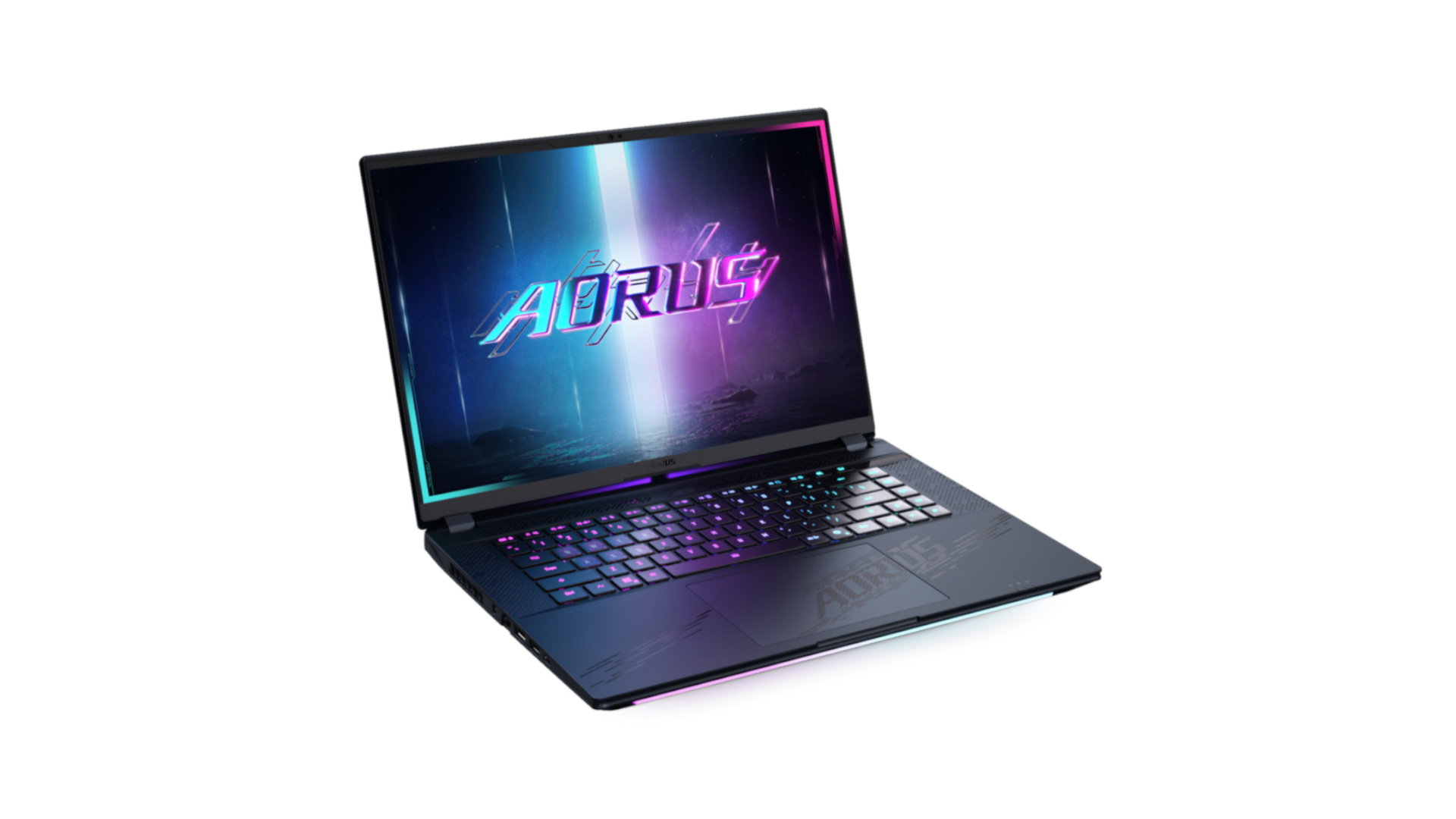
Leave a Reply